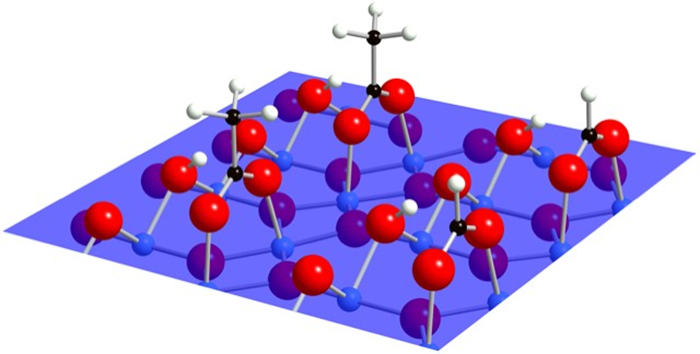We all know we shouldn't drink and drive. But what about hopping behind the wheel the morning after you've been drinking? According to a new meta-analysis, even this could be problematic, as the effects of alcohol on our brains may linger even after the chemical has left our bloodstream.
The meta-analysis, which was published Aug. 25 in the journal Addiction, found that a night of heavy drinking may affect people's cognition the next day, including their memory, attention, coordination and even driving skills.
"Our findings demonstrate that [having a] hangover can have serious consequences for the performance of everyday activities such as driving, and workplace skills such as concentration and memory," senior study author Sally Adams, an assistant professor in the Department of Psychology at the University of Bath, in the United Kingdom, said in a statement.

Thinking after drinking
It's well-known that drinking alcohol can temporarily impair thinking and coordination while a person is intoxicated. But whether drinking alcohol impairs cognition the next day — i.e., when a person is hungover — is less clear, with studies on the topic finding conflicting results.
In the meta-analysis, the researchers analyzed data from 19 previous studies involving more than 1,100 people. All of the studies tested people's thinking abilities the day after they had drunk heavily, when their blood-alcohol level was less than 0.02 percent. (For comparison, the legal blood-alcohol limit for driving a car in the United States is 0.08 percent.)
Some of the studies were conducted in a laboratory — meaning that researchers gave people precise amounts of alcohol before testing their thinking abilities; other studies were "naturalistic," meaning that researchers told people to come to the lab after a typical night of social drinking.
The study found that, overall, people who were hungover had poorer attention, memory and coordination skills, compared with those who weren't hungover. A few of the studies tested people's driving ability using a driving simulation. The studies found that when people were hungover, their ability to control a vehicle was impaired, compared with when they were not hungover.
Although many people think that it's fine to drive the morning after a night of drinking, "it might be that we're still impaired the next day, even after the alcohol has left our system," Adams said.
Overall, the findings suggest that "some of the things that you might expect to happen with your thought processes on alcohol may continue throughout into the hangover period," said lead author Craig Gunn, also of the University of Bath's Department of Psychology. This means that if you're a student attending a lecture, you might not be able to remember things as well when you're hungover, compared with when you're not hungover, Gunn said. And if you're driving a car, you might not be able to react as efficiently to a red light, he said.
Still, the researchers noted that some of the studies did not take into account other factors that could affect thinking abilities, such as smoking or sleep deprivation. The researchers called for further studies testing the effects of alcohol on cognition, particularly on people's "executive functions," which include decision-making and problem solving.
More research is also needed on the effect of hangovers on workplace safety and productivity, the researchers said. They noted that although many workplaces have policies prohibiting intoxication on the job, few of these policies cover the next-day effects of alcohol.
To some people, part of going out with friends is drinking alcohol. Even though it may be fun at the time, especially since that new speakeasy serves amazing, one-of-a-kind drinks, the aftermath may not be as fun. Yep, the hangover: You’re exhausted, feel as though your head will explode since it hurts so much, and you may be nauseous or vomiting, too, among other symptoms. But something you may not think about is what happens to your brain when you’re hungover.
“The effects of alcohol are more significant than some realize — it impacts brain function and neurochemistry,” Dr. Adam Lipson, a neurosurgeon at IGEA Brain & Spine, says “Frequent hangovers are a sign of alcoholism. In my world as a surgeon, one hangover is too much. Everyone has a different relationship with this issue, but frequent hangovers should be considered a red flag.”
While you may not think a post-drinking headache is a big deal, a lot more is going on inside your head after drinking alcohol than you may think. Below, you’ll find some key things that happen to your brain when you have a hangover, according to experts and studies.
1.Increased Levels of Anxiety

You may already suffer from anxiety, but when you add alcohol to the equation, your anxiety might get worse. You may know of people, or even yourself, who have a glass of wine “to relax,” but this effect is false, even though it may seem relaxing at the time. According to Healthline, you may feel relaxed as a result of your blood alcohol content (BAC). A rise in BAC levels may make you feel better — temporarily. However, as the BAC levels decrease, that’s when feelings of depression and anxiety occur.
2Increased Feelings Of Depression

Do you ever feel sad after drinking alcohol? You probably hear people say it’s a depressant, and there’s truth to it. “Alcohol is a depressant, so it can make you feel sad either when consuming it, or afterwards when you have a hangover,” Dr. Isha Gupta, a neurologist at IGEA Brain & Spine,
3Decreased Motor Skills
While you may be aware that your motor skills decrease as you consume alcohol — hence, no drinking and driving — they also can during the hangover stage since you may still have alcohol in your system. According to the National Institute on Alcohol Abuse and Alcoholism, the cerebellum, aka an area of the brain that controls coordinating your movements and possibly certain forms of learning, is most frequently damaged when it comes to chronic alcohol consumption.
4.Inconsistent Sleep

Fotolia
If you wonder why you cannot get a good night’s sleep after a night of drinking, there’s good reason. Sure, maybe you initially passed out right out when you got home, but then you may find yourself waking up several times during the night. And, of course, poor sleep can lead to a downward spiral of decreased cognitive functioning, poor work performance, and just feeling out of it the day after drinking or for a few days after drinking. “Since alcohol is a depressant, as the alcohol leaves your system you may have difficulty sleeping, since its depressant effects are wearing off,” Dr. Gupta says.
5.Delusions

“There is something known as alcohol-related psychosis, which involves hallucinations or delusions during a period of alcohol withdrawal, which can occur during a hangover,” Dr. Gupta says. Strange, right? According to the National Center for Biotechnology Information, which is part of the United States National Library of Medicine, a branch of the National Institutes of Health, symptoms of psychosis can occur during or after heavy alcohol intake. “Clinically, alcohol-induced psychosis is similar to schizophrenia but has been found to be a unique and independent condition,” they state. “It is characterized by hallucinations, paranoia, and fear.”
After reading the above, you may also wonder how much alcohol is too much. “Everyone has a different and individual relationship with alcohol,” Dr. Lipson says. “It is suggested [by the Dietary Guidelines for Americans] that women consume no more than one alcoholic beverage per day and no more than two for men. Generally speaking, no more than four to six drinks should be consumed per week.”
There you have it — if you' ever feel "off" after a night of drinking, now you know there's a lot more than just a headache going on in your head when you're hungover.



 Graphic simulation of molecular layer. (Cornell University)
Graphic simulation of molecular layer. (Cornell University)

